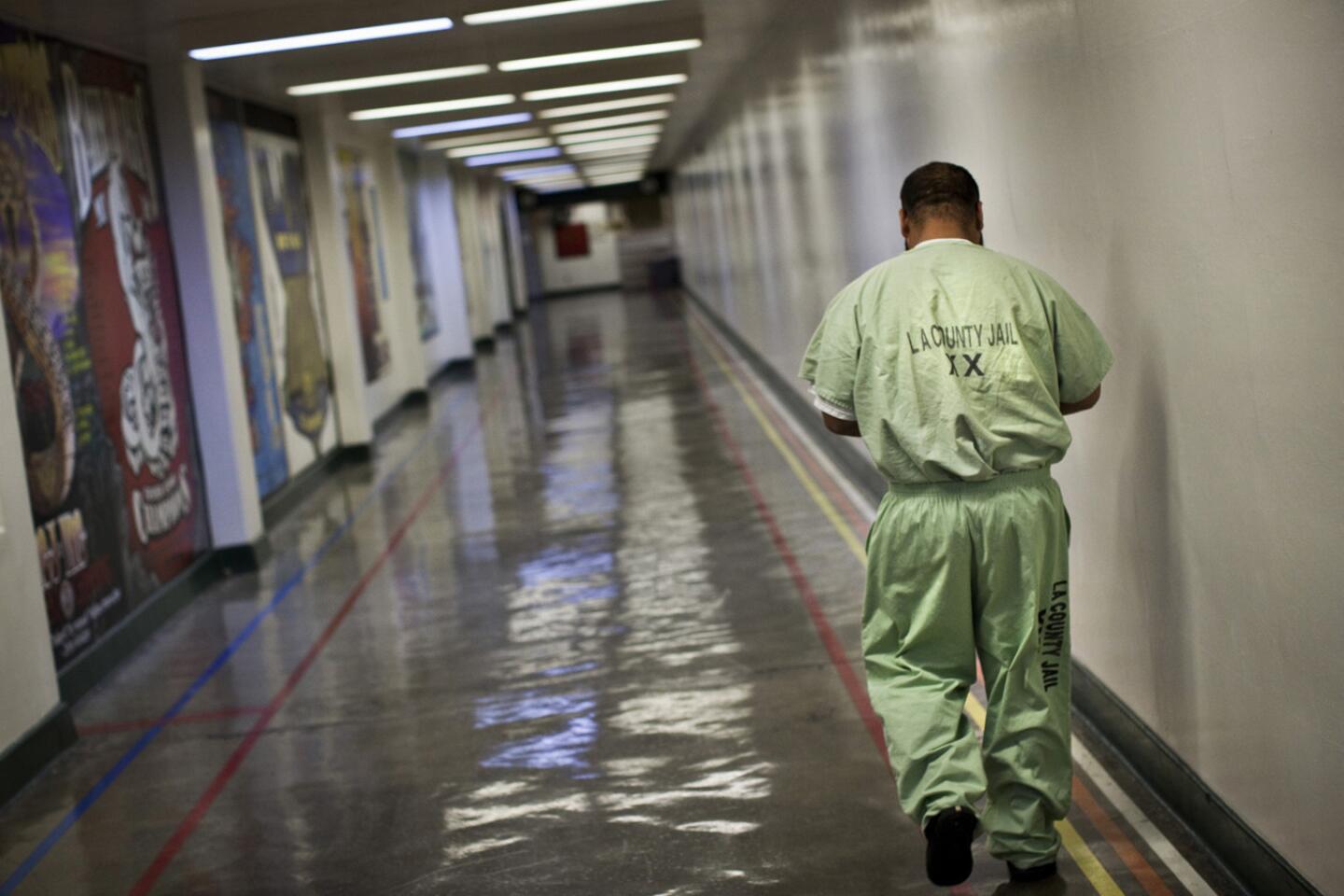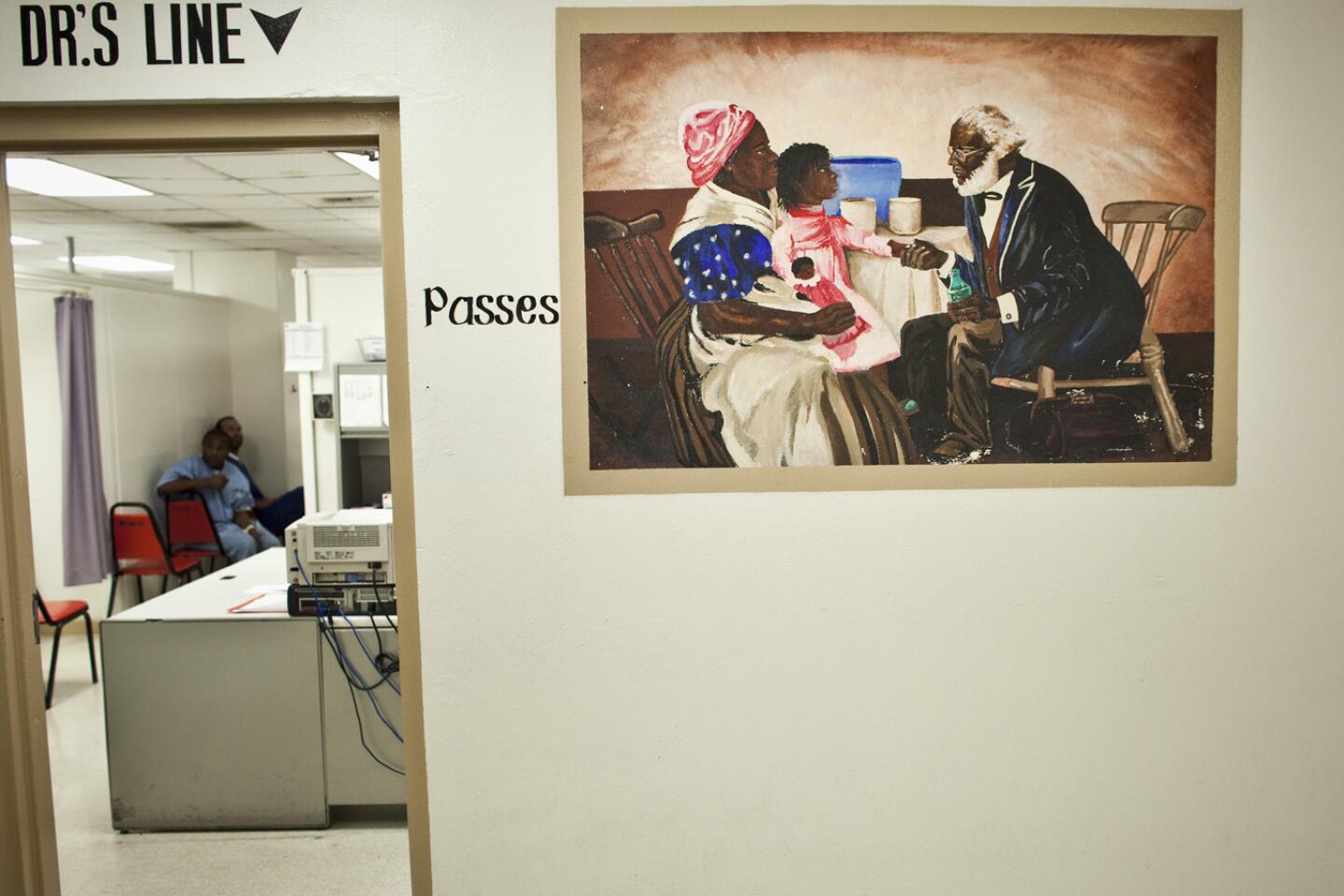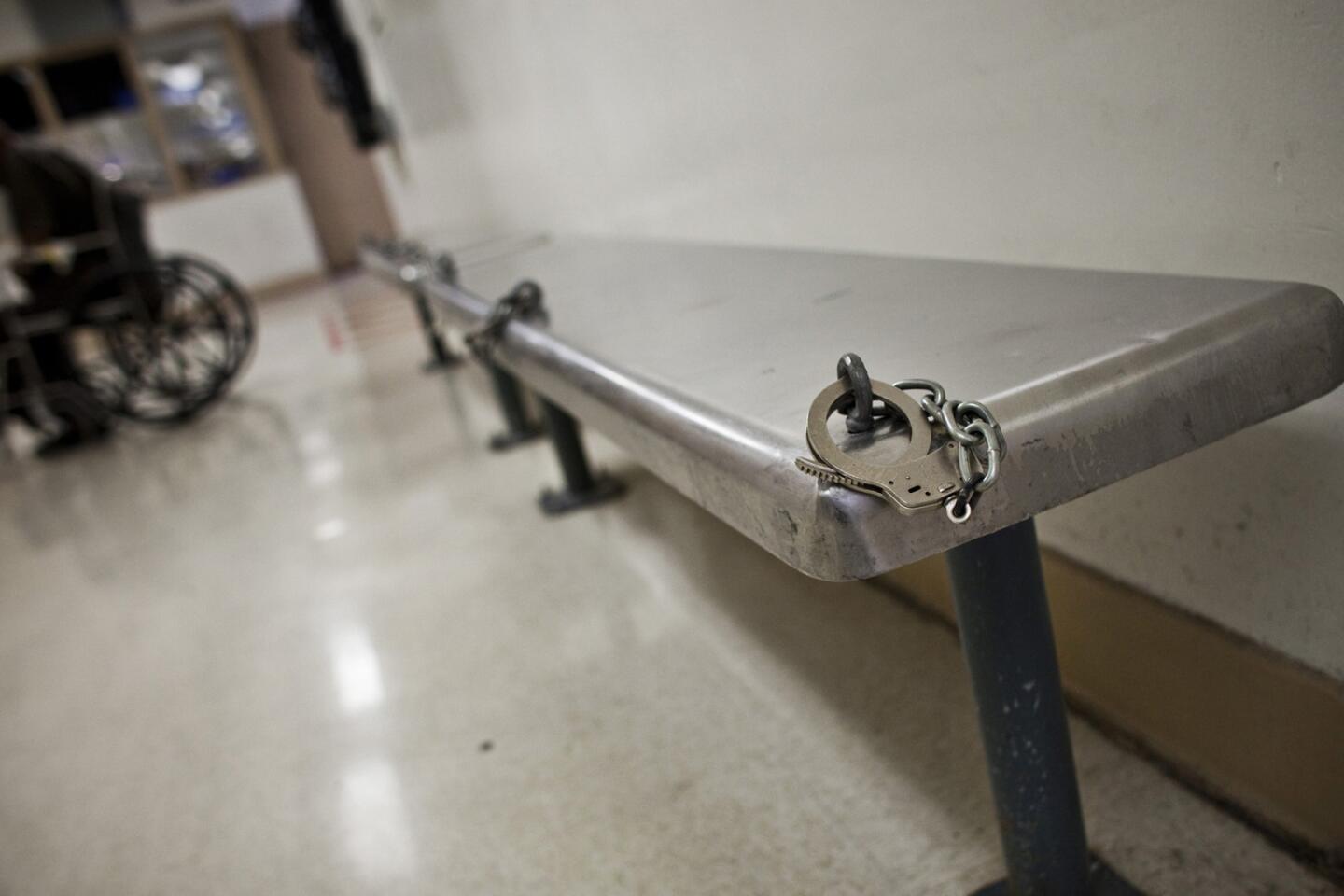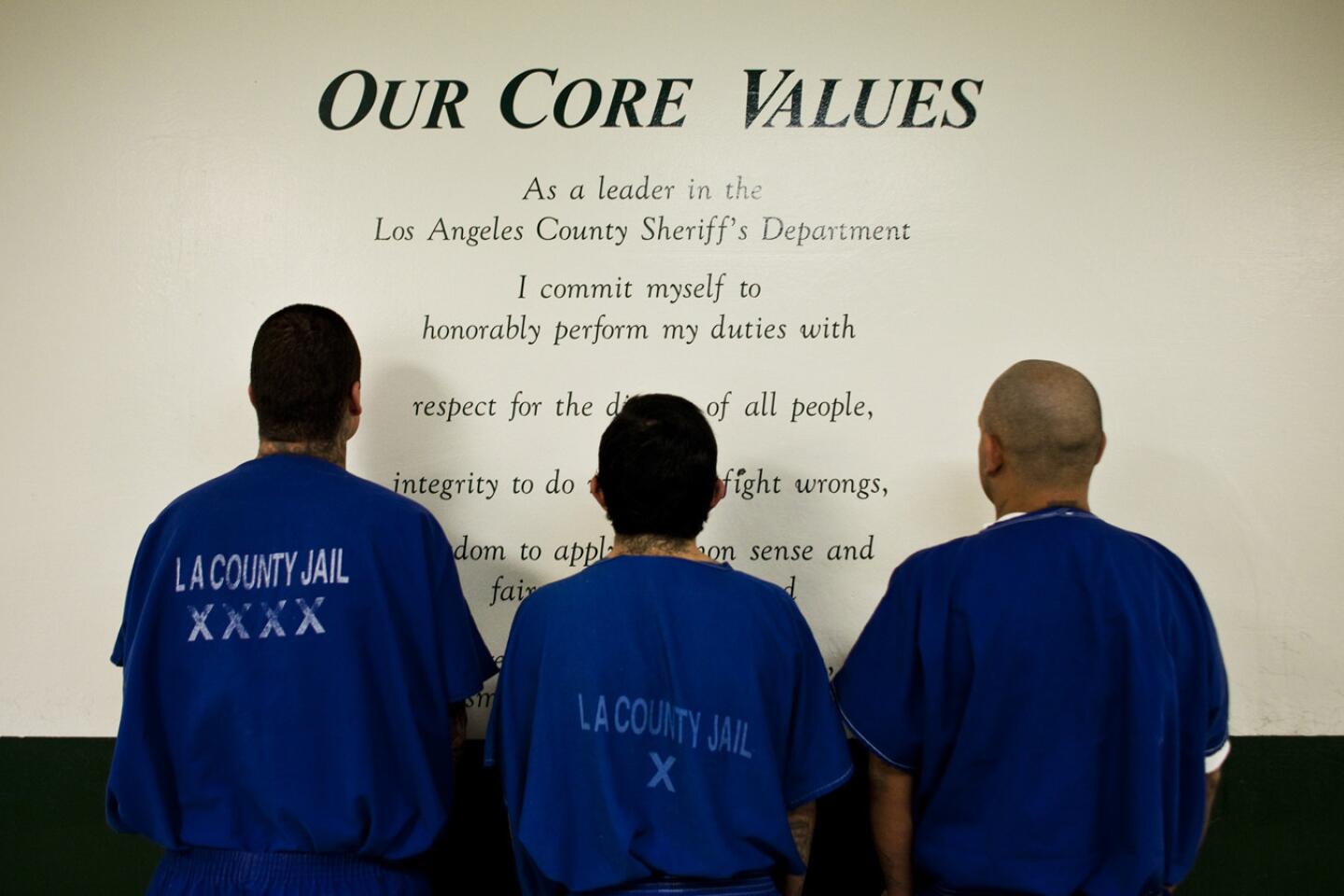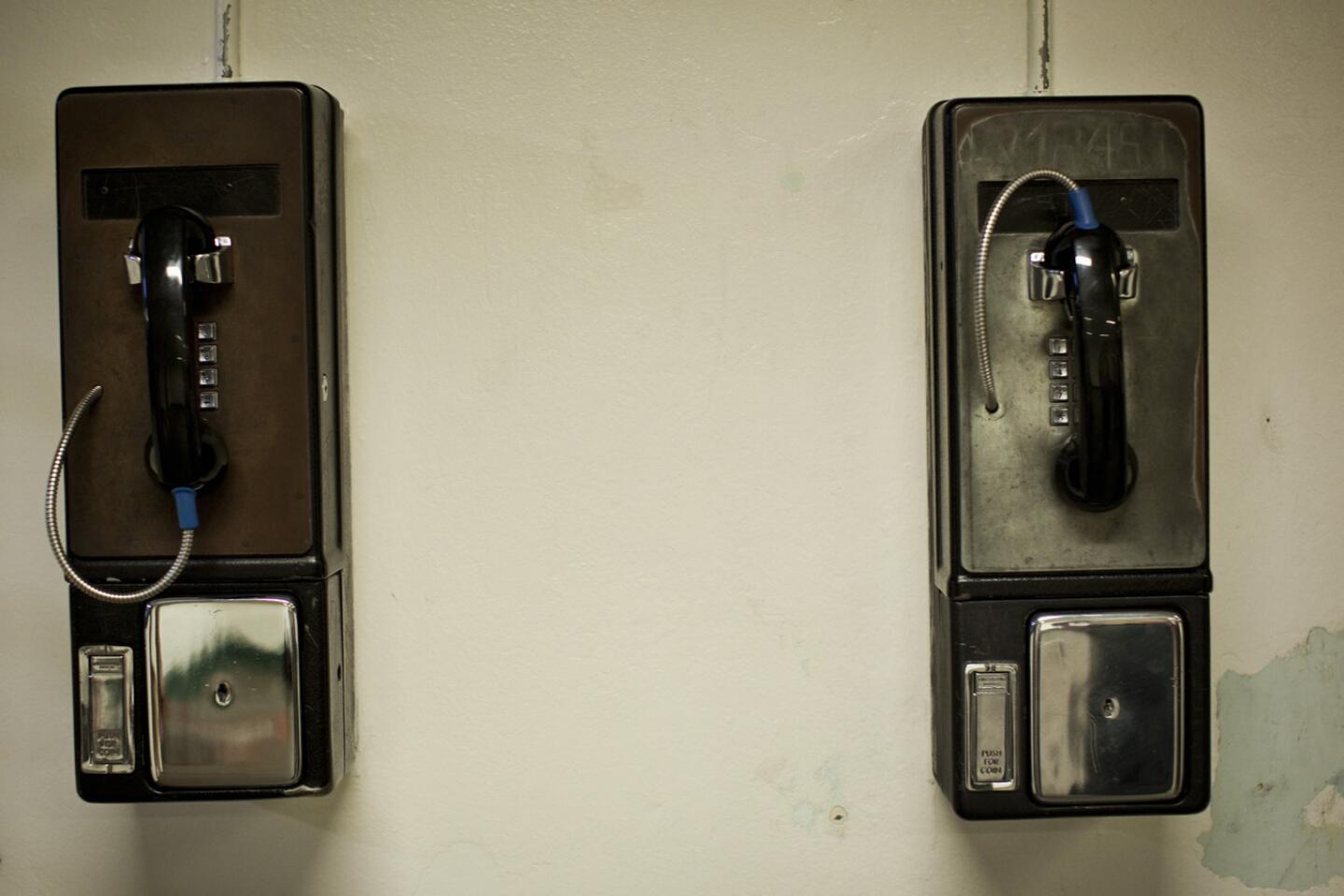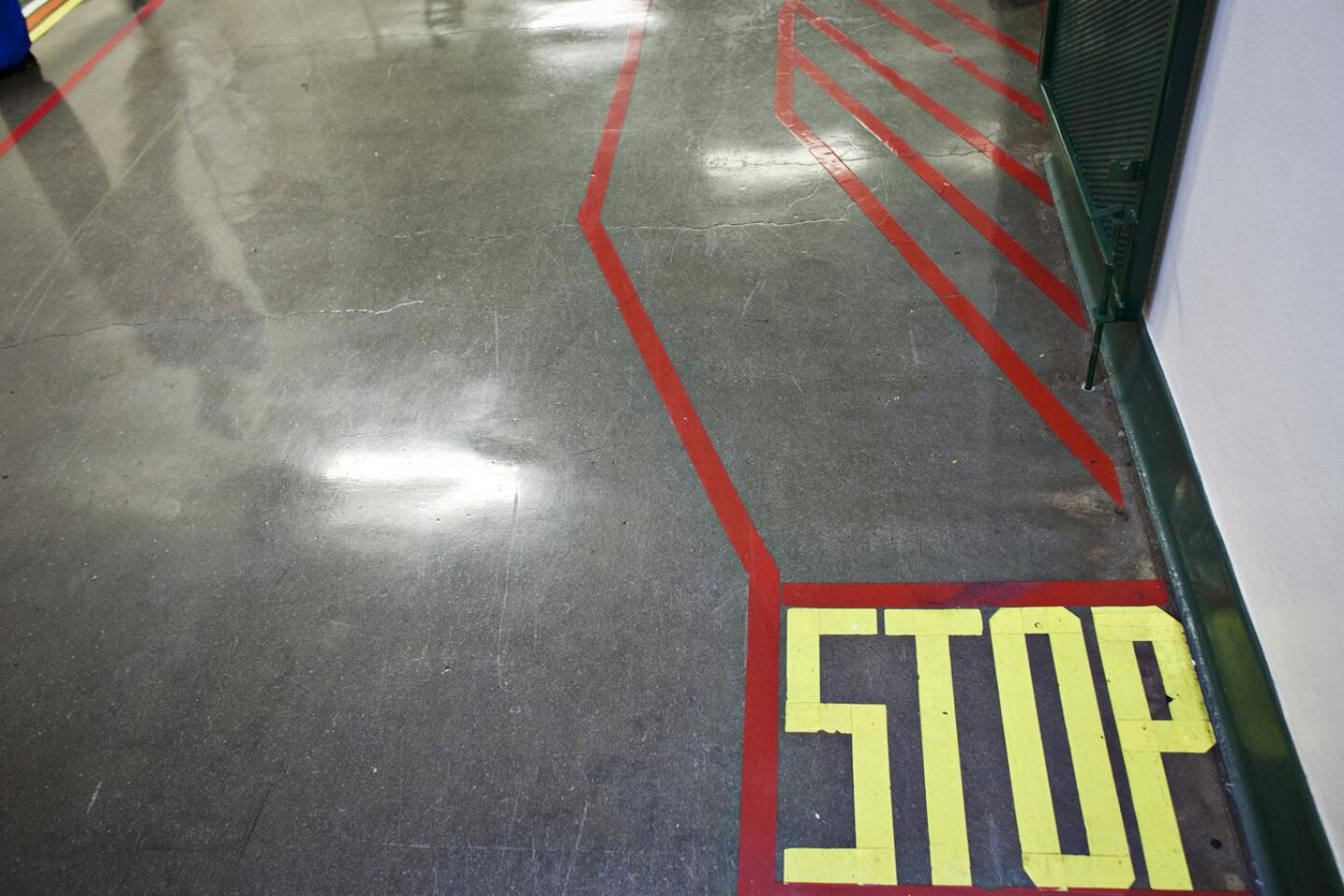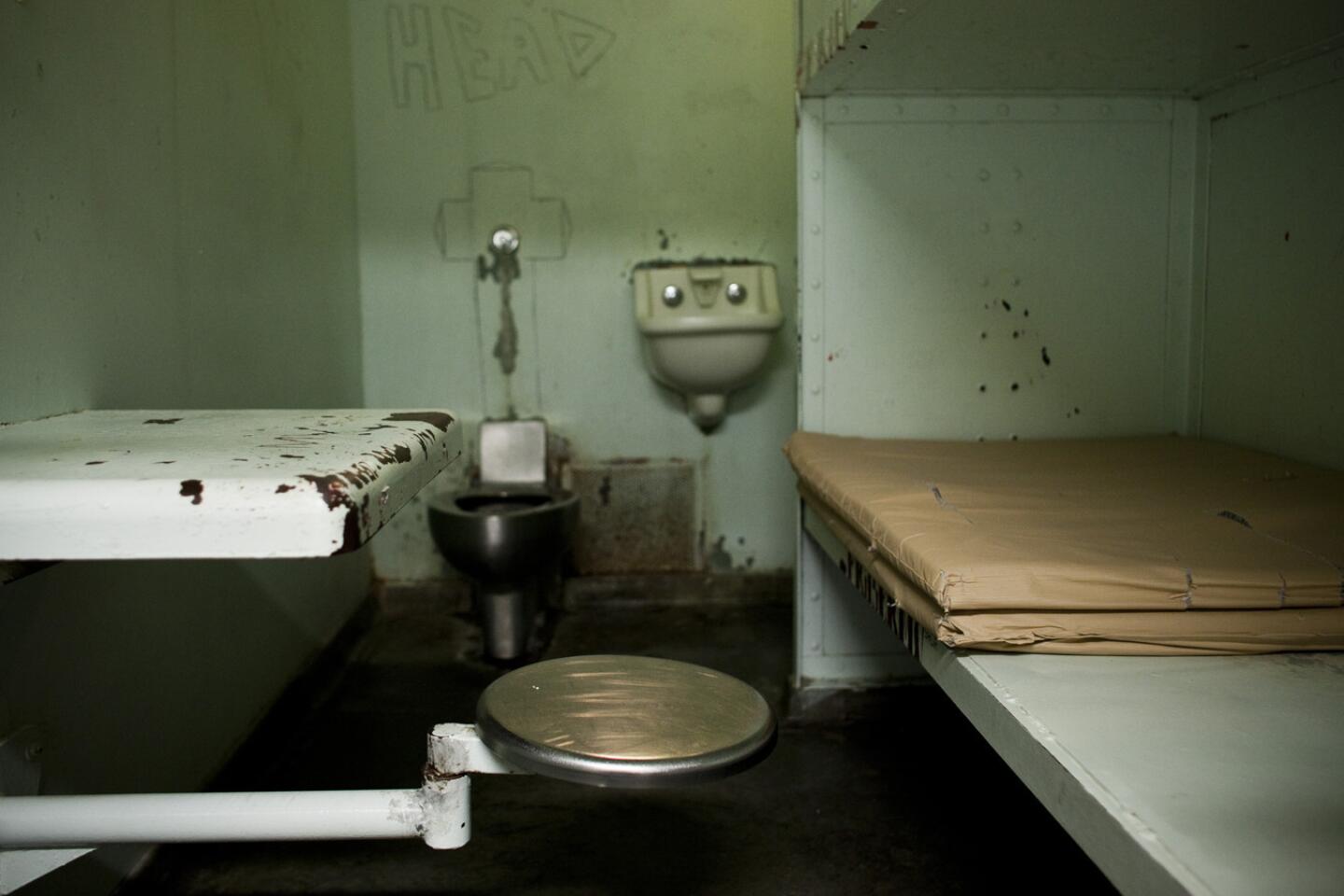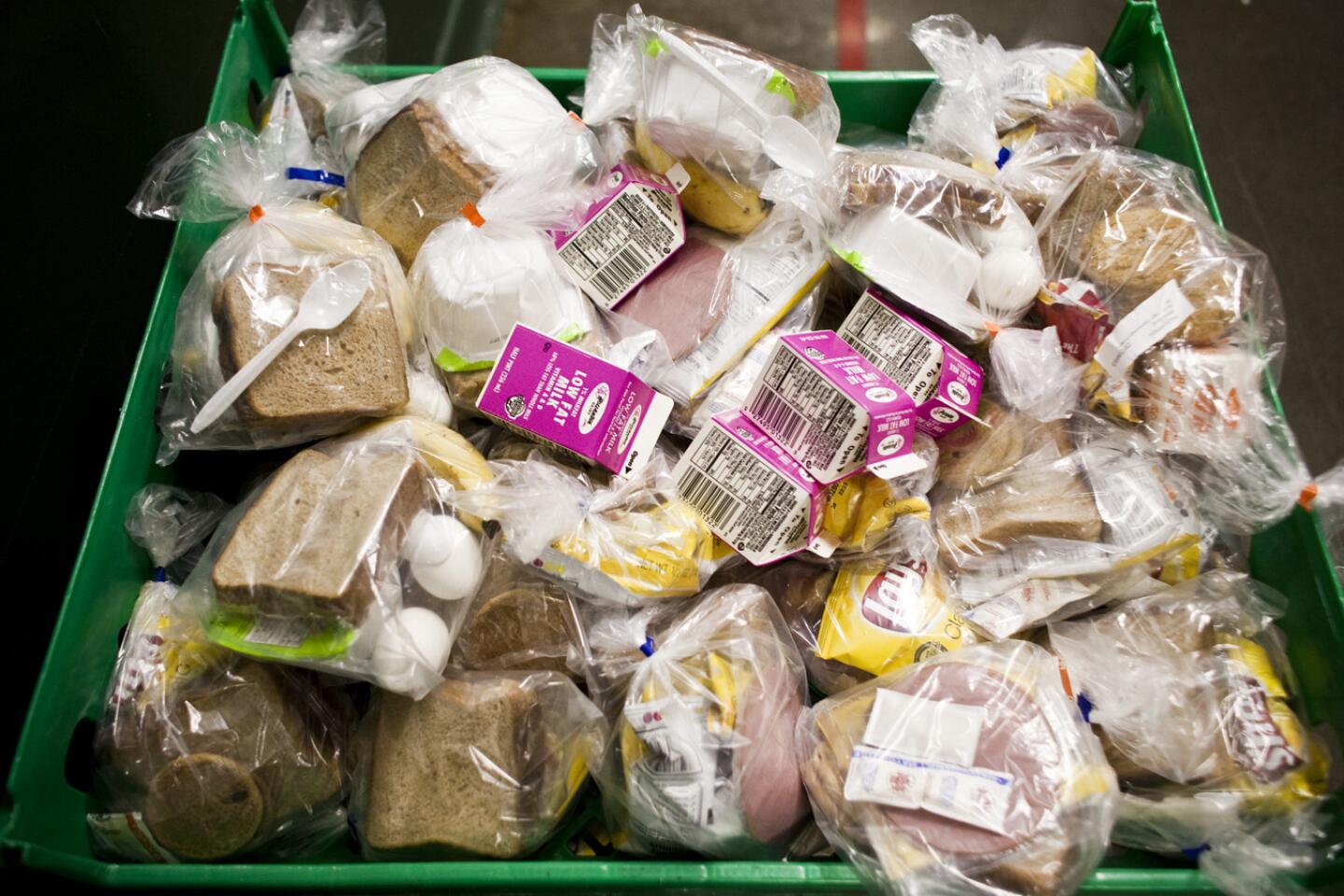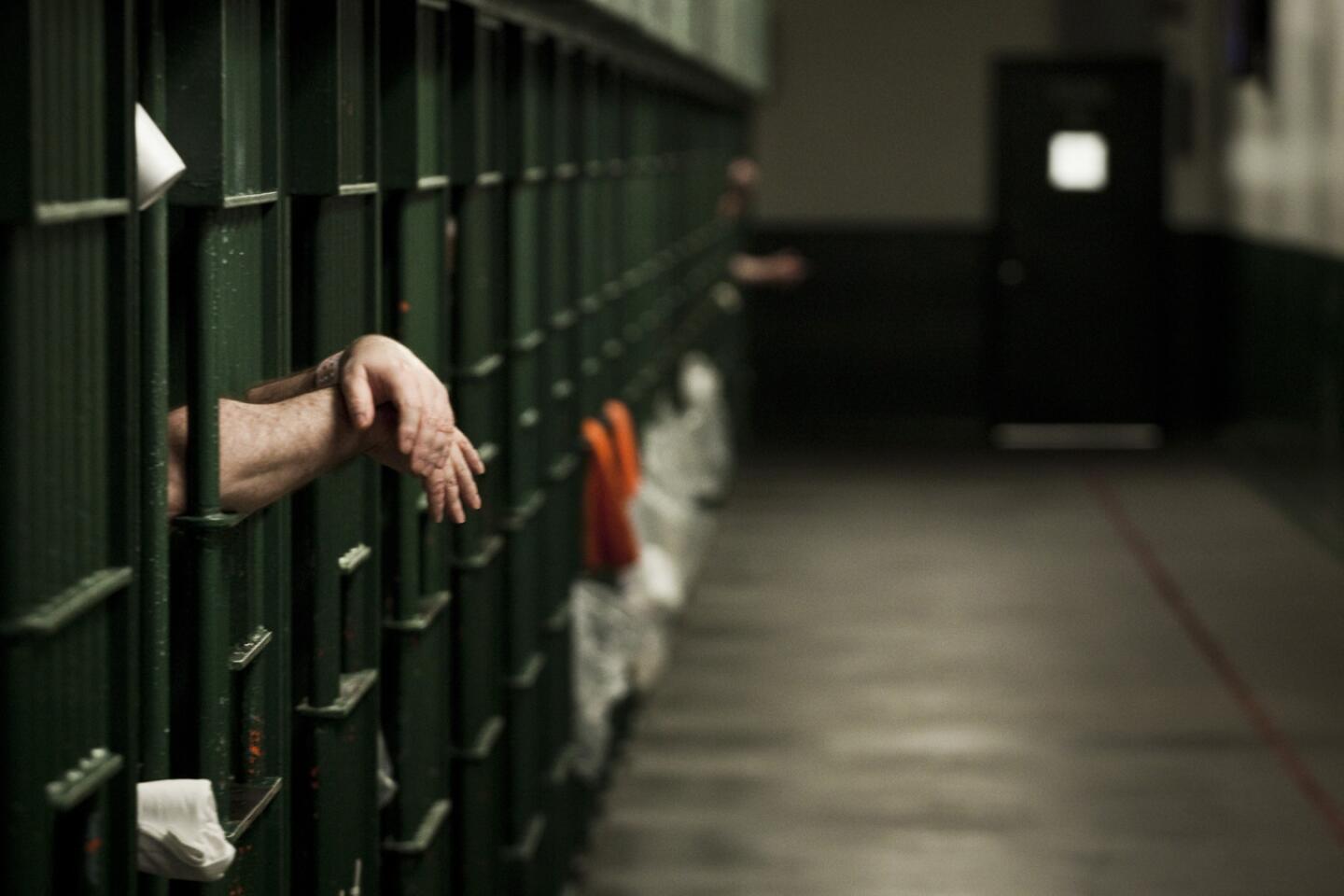ID errors put hundreds in L.A. County jails
Hundreds of people have been wrongly imprisoned inside the Los Angeles County Sheriff’s Department jails in recent years, with some spending weeks behind bars before authorities realized those arrested were mistaken for wanted criminals, a Times investigation has found.
The wrongful incarcerations occurred more than 1,480 times in the last five years. They were the result of a variety of factors, including officials’ overlooking fingerprint evidence and working off incomplete records.
The errors are so common that in some years people were jailed because of mistaken identity an average of once a day.
FULL COVERAGE: Jails under scrutiny
Many of those wrongly held inside the county’s lockups had the same names as criminals or had their identities stolen — problems that took days or weeks for authorities to sort out.
In one case, a mechanic held for nine days in 1989 on a warrant meant for someone else was detained again 20 years later on the same warrant. He was jailed for more than a month the second time before the error was discovered.
In another instance, a Nissan customer service supervisor was hauled by authorities from Tennessee to L.A. County on a local sex-crimes warrant meant for someone with a similar name.
In a third case, a former construction worker mistaken for a wanted drug offender said he was assaulted by inmates and ignored by jailers.
“I’m with criminals, and I was a criminal to them,” said Jose Ventura, 53, who had never been arrested before.
The problems continue because of a breakdown not just by jail officials but by police who arrest the wrong people and by the courts, which have issued warrants that did not precisely identify the right people.
Sheriff’s officials said they make every effort to avoid detaining the wrong suspects. They pointed out that the number of people wrongly identified as wanted criminals makes up a tiny fraction of the 15,000 inmates in the county’s jails at any given time. The Sheriff’s Department produced the tally of people who were jailed because of misidentification in response to a Times Public Records Act request.
The errors occur in jails up and down the state, and many of the misidentified inmates in the L.A. County sheriff’s jails were arrested by law enforcement agencies outside the county.
In California, criminals are assigned a unique nine-digit number matched to their fingerprints. Some warrants issued by judges fail to include those identifiers, making it more difficult for police and jailers to determine whether they have the right suspect.
When those fingerprint numbers are included, police agencies sometimes fail to determine why the arrested person has a different number or no number at all. In those cases, authorities could catch the error by obtaining the wanted criminal’s fingerprints from the state Department of Justice and comparing them with those of the person in custody.
“It’s bureaucratic sloth and indifference,” said attorney Donald W. Cook, who has represented more than a dozen clients mistakenly held on warrants issued for other people. “They don’t want to take the heat for letting someone go who a cop has decided, no matter how tentatively, is the subject of a warrant.”
Those mistakenly arrested told The Times that they were ignored when they pleaded with police and jail staff about their innocence. In the county jails, the Sheriff’s Department has a policy to launch investigations when inmates protest during booking that they are not the wanted people. But records show the department conducted investigations for only a small fraction of the number of people who courts eventually ruled were not the right suspects.
Sheriff’s officials said they are bombarded with false innocence claims from inmates. It would be impossible to check every claim, they said, and jailers’ authority to release an inmate ordered detained by a judge is limited.
“People lie to us about who they are all the time,” said sheriff’s Cmdr. David Fender.
Victims of mistaken identification typically go through several rounds of checks before they land in L.A. County Jail. Arresting officers use the name, birth date and driver’s license number of the person they stop to check for warrants. The first fingerprint check is usually done when officers bring the people they arrest to the police station where they are booked. From there, inmates are taken either to court or directly to county jail.
Once inmates arrive at the jail, officials there review the fingerprints again and compare what’s on a warrant to the personal information for the inmate. But sheriff’s officials maintain that their top priority is to hold people awaiting court hearings rather than questioning the validity of the arrests.
“It’s not our position or authority to check the work of every police agency in the county,” said sheriff’s Capt. Mike Parker.
The number of mistaken identifications has been declining, but the department is still on pace to record nearly 200 wrongful detentions this year. For those who are jailed, the experience can be harrowing.
Ventura, the former construction worker, was pulled over on a traffic stop by Chino police and arrested on a warrant meant for someone else. Jailers stripped him and escorted him to a large shower area when he arrived at the L.A. County Jail.
Another inmate, he said, pushed him over so he could use Ventura’s shower, leaving Ventura naked on the ground with back pain. Later, another inmate snatched his pair of jail-issued shoes and forced Ventura to apologize.
“Psychologically, I was already dead,” he said.
Two days later, Ventura, a member of the Seventh-day Adventist Church, arrived in court. He preached to other inmates in his holding cell as they waited for their hearings.
Once in court, Ventura, a native of El Salvador, watched as his lawyer told a judge that police had arrested the wrong man. The 1994 warrant was for a Mexican national accused of drug possession at a time when Ventura’s passport showed he wasn’t even in the country, the attorney said. A Los Angeles Police Department official brought the actual suspect’s fingerprints to court and concluded that Ventura was the wrong person.
“Mr. Ventura, our apologies,” a judge told him as he ordered Ventura released. “Good luck.”
Once released, those arrested have little recourse. State and federal laws generally protect law enforcement agencies from lawsuits over such detentions as long as officers were acting on a valid warrant and had a reasonable belief that they were arresting the right person.
Sheriff’s deputies pulled over Phillip Reed, a South L.A. youth sports coach, who was on his way home from the grocery store in 2009.
A warrant listed Reed’s name, date of birth and driver’s license number, but Reed knew he was the wrong man. His younger brother, Marcus, had used Phillip’s identity in the past, Reed said in a deposition. Reed had previously obtained a court document showing that another warrant had wrongly named him before.
He said he presented the document to the deputies who pulled him over — a claim that one of the arresting deputies later disputed. Authorities booked Reed even though the person listed on the warrant had a unique fingerprint number and Reed had no number.
That night, inside a county holding cell, Reed said he begged deputies to look inside his wallet, where he kept the judge’s form.
In the corner of his cell, Reed recalled in an interview, he began to weep and pray: “I know this is not me. I don’t know what else to do. God help me.”
It wasn’t until the next day that authorities discovered the error and released Reed.
In some cases, warrants contain only names, dates of birth and basic physical descriptions that can apply to multiple people. Many times, officers will encounter people who match most if not all of those details.
In 1989, Santiago Ibarra Rivera spent a week in jail before officials figured out that he was not the man wanted on a warrant for a deadly drunk driving accident. Rivera had no criminal record but shared a similar name and the same birthday as the man for which the warrant was meant.
When he was freed, authorities gave Rivera a court document showing that he had been exonerated. Years later, he lost the record when his wallet was stolen.
The warrant became a distant memory until March 2009, when San Bernardino County sheriff’s deputies stopped Rivera while he was riding in a co-worker’s car that was missing a front license plate. Deputies ran his name and the warrant appeared.
Rivera pleaded that he wasn’t the wanted man and that he’d been wrongly jailed for the warrant once before. He told one of the deputies that he had other court papers at his home to prove it. But the deputies, he said, refused to stop there. According to one of the arresting deputies, Rivera’s knowledge of the warrant only served to make him appear guilty.
Rivera said he complained first in San Bernardino County Jail and later in L.A. County Jail, where he was transferred, but was ignored in both lockups.
A review of Rivera’s criminal history based on his fingerprints, readily available in law enforcement databases, would have showed that in 1989 he had been arrested and exonerated on a vehicular manslaughter case.
The old court file that contained the real suspect’s fingerprints was in the court archives. Rivera languished behind bars as officials searched for them. He implored officials to find his records “as soon as possible because I have to return to my work.”
When it was eventually confirmed that Rivera was the wrong person, Superior Court Judge Kathryn Solorzano apologized. “Mr. Rivera, I’m very sorry. I don’t know how many days…”
“I think close to a month,” Rivera’s attorney interrupted, according to a transcript.
“That’s terrible,” the judge said.
More to Read
Sign up for Essential California
The most important California stories and recommendations in your inbox every morning.
You may occasionally receive promotional content from the Los Angeles Times.
